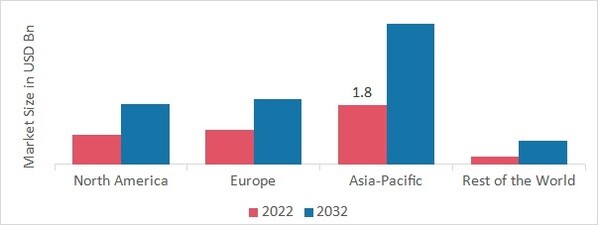Leading market players are investing heavily in research and development activities in order to expand their product and service lines, which will aid the Reactive Dyes Market, to grow even more. Market participants are also adopting a range of strategic initiatives to extend their presence, with important market developments including new product launches, contractual agreements, mergers and acquisitions, higher investments, and collaboration with other organizations. To expand and survive in a more competitive and rising market climate, Reactive Dyes industry must offer cost-effective items.
Manufacturing locally to decrease operational expenses is one of the key business tactics used by manufacturers in the Reactive Dyes industry to benefit clients and increase the market sector. In recent years, the Reactive Dyes industry has offered some of the most significant advantages to medicine. Major players in the Reactive Dyes Market, including Huntsman International LLC, Nippon Kayaku Co., Ltd., Sumika Chemtex Co., Ltd., Archroma, Colourtex, Kiri Industries Ltd., IM Dye Chem, Roop dyes and Intermediates, Kevin India Co., and others, are attempting to increase market demand by investing in research and development operations.
Huntsman Corporation is a multinational manufacturer and marketer of specialized and differentiated chemicals that serve a wide range of manufacturers in a variety of consumer and industrial end industries. With more than 60 manufacturing, R&D, and operations facilities spread over about 30 countries, the corporation operates in three segments. In September 2020, With the introduction of HIGH IQ Lasting Black eco, Huntsman Textile Effects expanded its industry-recognized HIGH IQ brand-assurance program.
The new color-retention program, which is based on Huntsman's award-winning AVITERA SE Black reactive dye, will assist mills, brands, and retailers in satisfying demand for eco-friendly black colors that maintain their rich color even after numerous items of washing.
The company Archroma Management GmbH (Archroma) provides specialty chemical products and dyes. It supplies process and surface chemicals for the paper and packaging industry, textile chemicals and dyes, optical brightening agents, colorants, and specialty emulsions for the paints, adhesives, textile, leather, paper, and construction industries. The business is divided into three divisions: coatings, adhesives, and sealants; brand and performance textile specialties; and packaging and paper specialties. In addition to Europe, the Americas, Asia, and Africa all have producing plants. Through subsidiaries, the corporation offers its goods in North America, South America, Europe, Africa, and Asia-Pacific.
It belongs to SK Capital Partners' portfolio of companies. The headquarters of Archroma are in Reinach, Basel, Switzerland. In October 2022, A cooperation was formed between the Italian company Archroma and Panatronix, a leader in ultrasonic cleaning for the textile and denim industries, to create a replacement for the traditional yarn washing process and its associated high water use and pollution.
Birla Cellulose will reveal its latest innovation, Birla Viscose - Intellicolor, during the prestigious Bharat Tex event in 2024. Birla Cellulose is ready to change the textile industry landscape with its unique solution, which addresses a long-standing issue with conventional reactive dyeing. Intellicolor is a ground-breaking improvement in the dyeing process that employs Cationic or Basic dyes. It has a phenomenal dye exhaustion rate of over 95%, outperforming traditional approaches. It removes the need for salt and soda ash in the dyeing process, which simplifies operations and reduces environmental effect.



 Source: Secondary Research, Primary Research, Market Research Future Database and Analyst Review
Source: Secondary Research, Primary Research, Market Research Future Database and Analyst Review









Leave a Comment